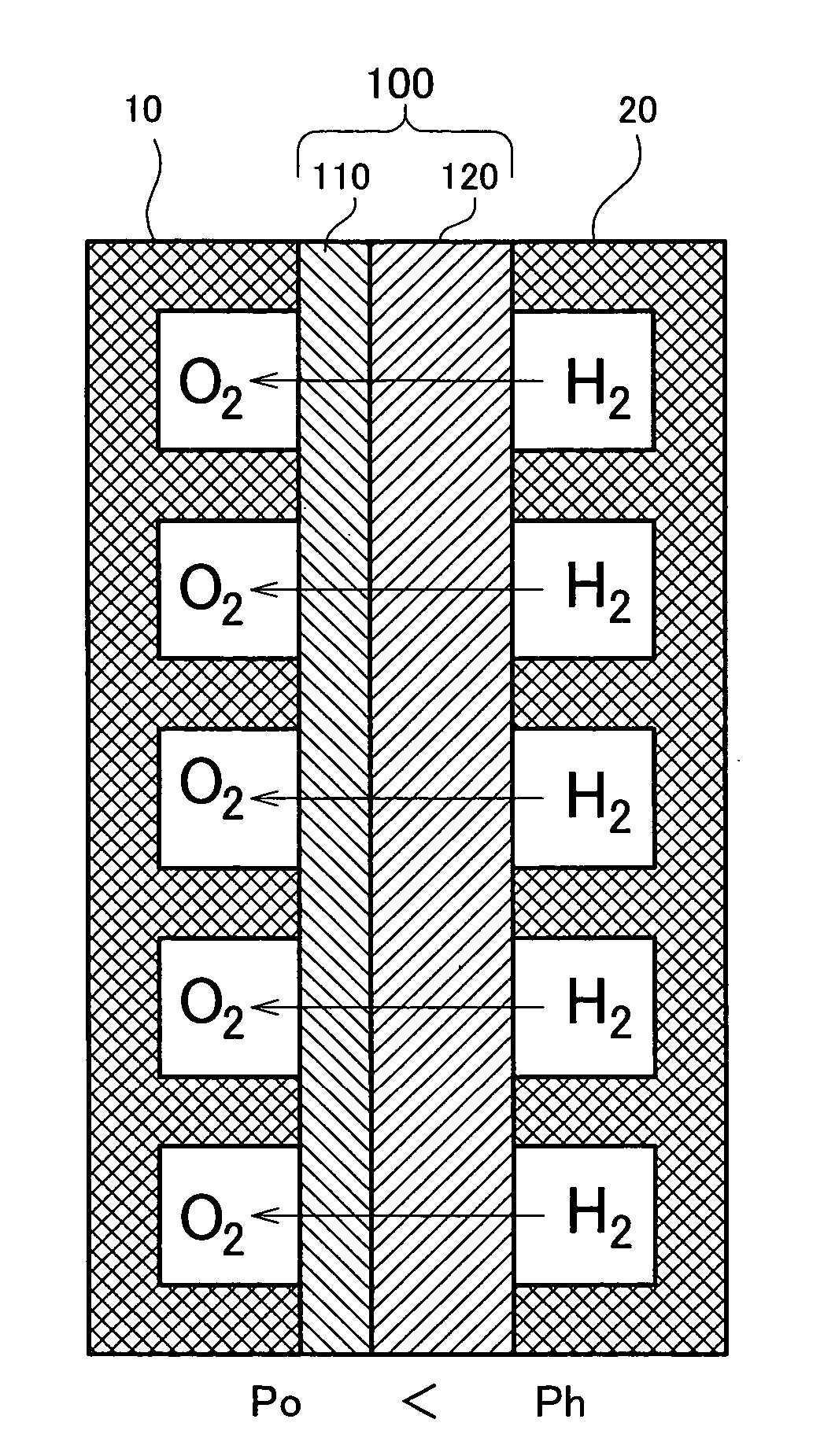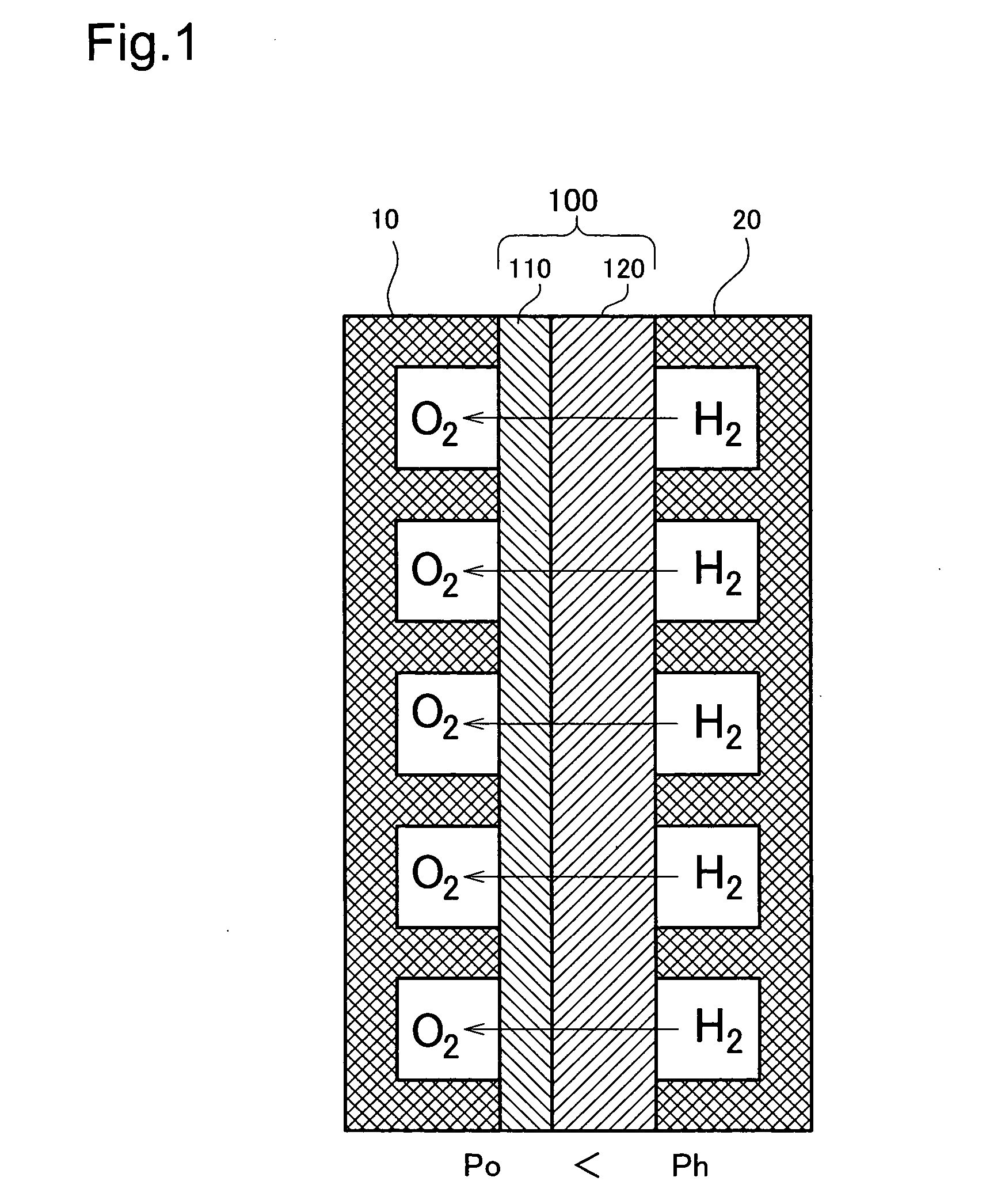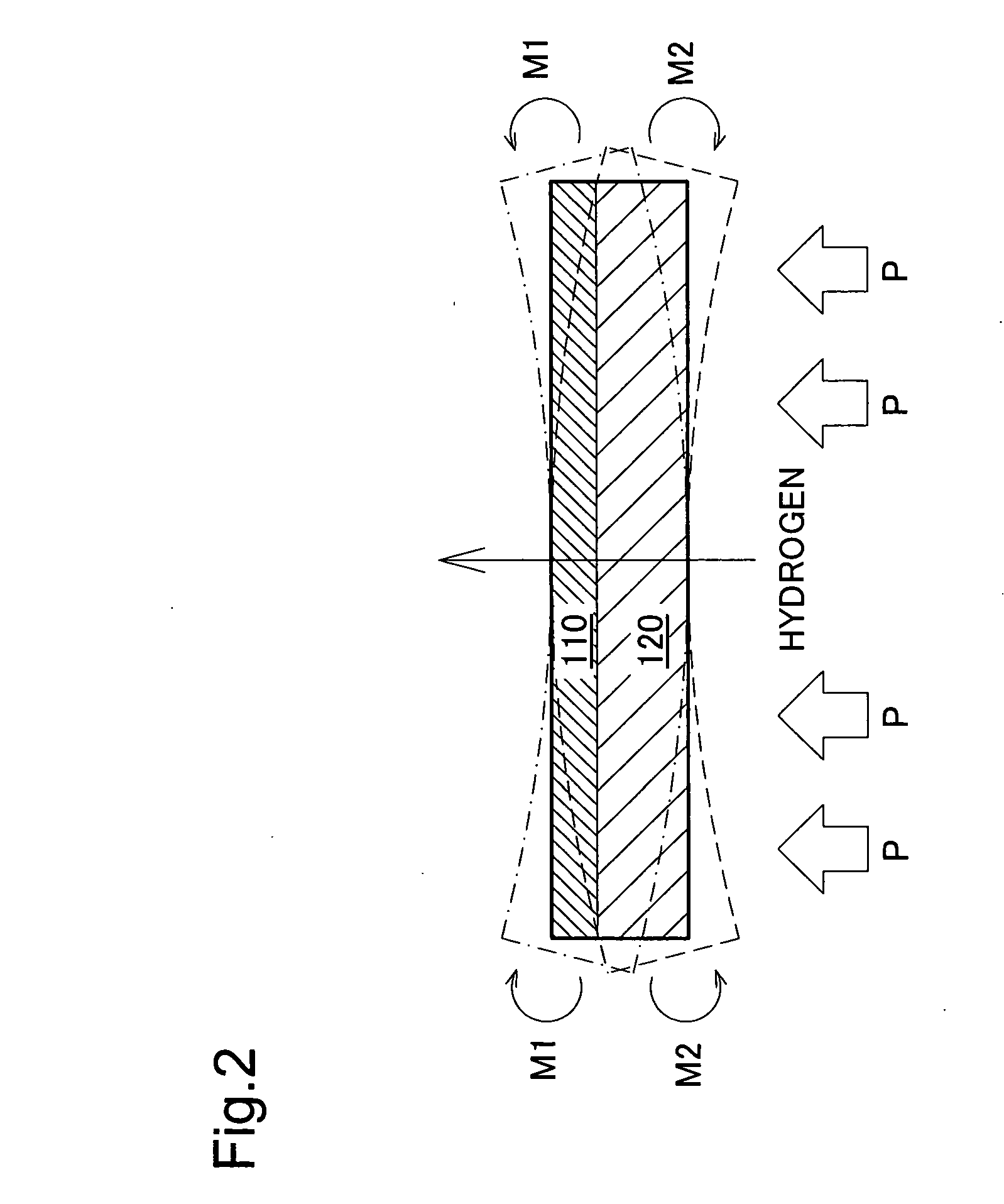Fuel cell and method for manufacturing electrolyte membrane for fuel cell
- Summary
- Abstract
- Description
- Claims
- Application Information
AI Technical Summary
Benefits of technology
Problems solved by technology
Method used
Image
Examples
embodiment 11
[0057]FIG. 24 is an illustration depicting the process of producing the electrolyte membrane of
[0058]FIG. 25A to FIG. 25D are illustrations depicting the separation preventing action of the groove.
[0059]FIG. 26A and FIG. 26B are plan views depicting two types of electrolyte membrane in Embodiment 11.
[0060]FIG. 27A and FIG. 27B are illustrations depicting the cross section of the electrolyte membrane of a Variation Example of Embodiment 11.
BEST MODE FOR CARRYING OUT THE INVENTION
[0061] The embodiments of the invention will be described in the following order. [0062] A. Embodiment 1 [0063] A1. Overall Composition [0064] A2. Electrolyte Membrane [0065] A3. Variation Example [0066] B. Embodiment 2 [0067] C. Embodiment 3 [0068] D. Embodiment 4 [0069] E. Embodiment 5 [0070] F. Embodiment 6 [0071] G. Embodiment 7 [0072] H. Embodiment 8 [0073] I. Embodiment 9 [0074] J. Embodiment 10 [0075] K. Embodiment 11 [0076] A. Embodiment 1
[0077] A1. Overall Composition
embodiment 1
[0078]FIG. 1 is a model diagram depicting the overall arrangement of the fuel cell of A cell making up the fuel cell is shown in cross section. This cell has a structure wherein an electrolyte membrane 100 is sandwiched between an oxygen electrode 10 (hereinafter sometimes designated as the cathode) and a hydrogen electrode 20 (hereinafter sometimes designated as the anode). The structure and material of the oxygen electrode 10 and the hydrogen electrode 20 can be formed of various materials such as carbon.
[0079] The electrolyte membrane 100 has a thin electrolyte layer 110 of a solid oxide formed on the surface of a fine hydrogen-permeable metal layer 120 of vanadium (V). The electrolyte layer 110 may consist of a BaCeO3 or SrCeO3 based ceramic proton conductor. A coating of palladium (Pd) may be formed on the outside of the electrolyte layer 110. In this embodiment, the electrolyte layer 110 thickness is 1 μm, and the hydrogen-permeable metal layer 120 thickness is 40 μm. The thi...
case a1
[0091] Case A1 is an example in which the contact interface is partial, and the anode is arranged to the outside. As with the Embodiment, a skeletal frame member 126A is disposed around hydrogen-permeable metal 121A. However, on the anode contact face (upper face in the drawing), the skeletal frame member 126A is not exposed. Accordingly, the hydrogen-permeable metal 121A can contact the anode over its entire face, so that migration of hydrogen proceeds smoothly, and thus membrane resistance can be reduced.
[0092] Case B1 is an example in which the contact interface is partial, and the anode is arranged to the inside. As with Embodiment 1, hydrogen-permeable metal 121B is disposed within recesses in a skeletal frame member 126B. The anode 20B is arranged on the upper face of the hydrogen-permeable metal 121B. With this construction, by making the hydrogen-permeable metal 121B thin, the rate of hydrogen permeation and be improved, and thus membrane resistance can be reduced.
[0093] Ca...
PUM
 Login to View More
Login to View More Abstract
Description
Claims
Application Information
 Login to View More
Login to View More - R&D
- Intellectual Property
- Life Sciences
- Materials
- Tech Scout
- Unparalleled Data Quality
- Higher Quality Content
- 60% Fewer Hallucinations
Browse by: Latest US Patents, China's latest patents, Technical Efficacy Thesaurus, Application Domain, Technology Topic, Popular Technical Reports.
© 2025 PatSnap. All rights reserved.Legal|Privacy policy|Modern Slavery Act Transparency Statement|Sitemap|About US| Contact US: help@patsnap.com



